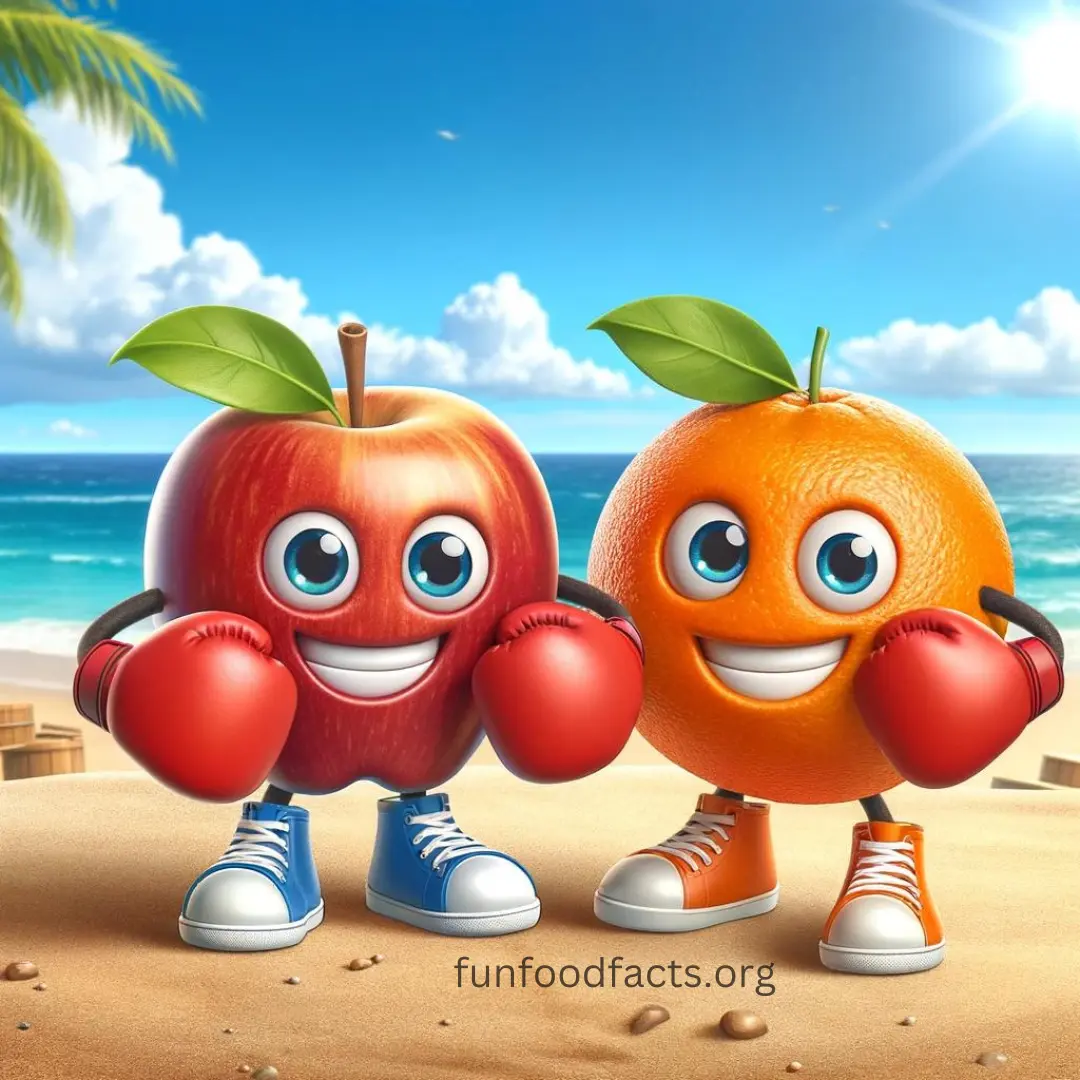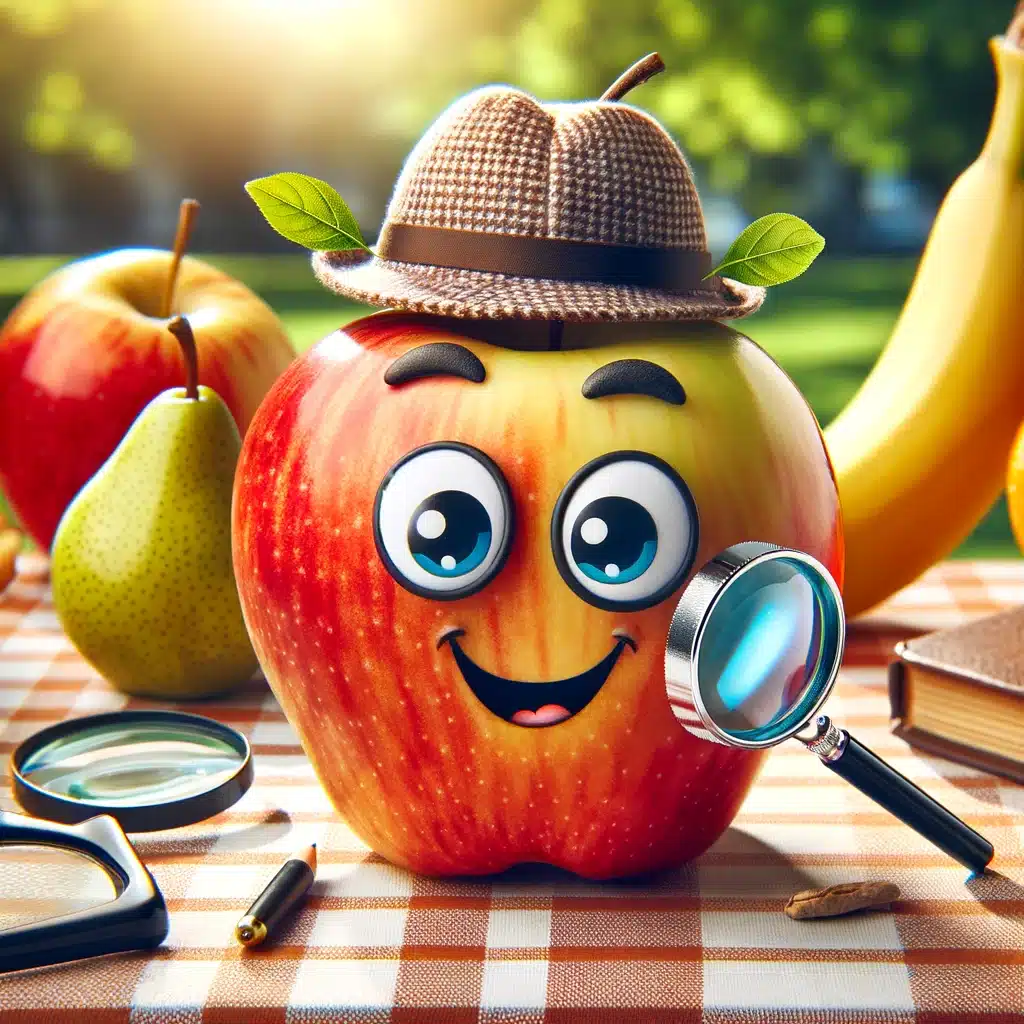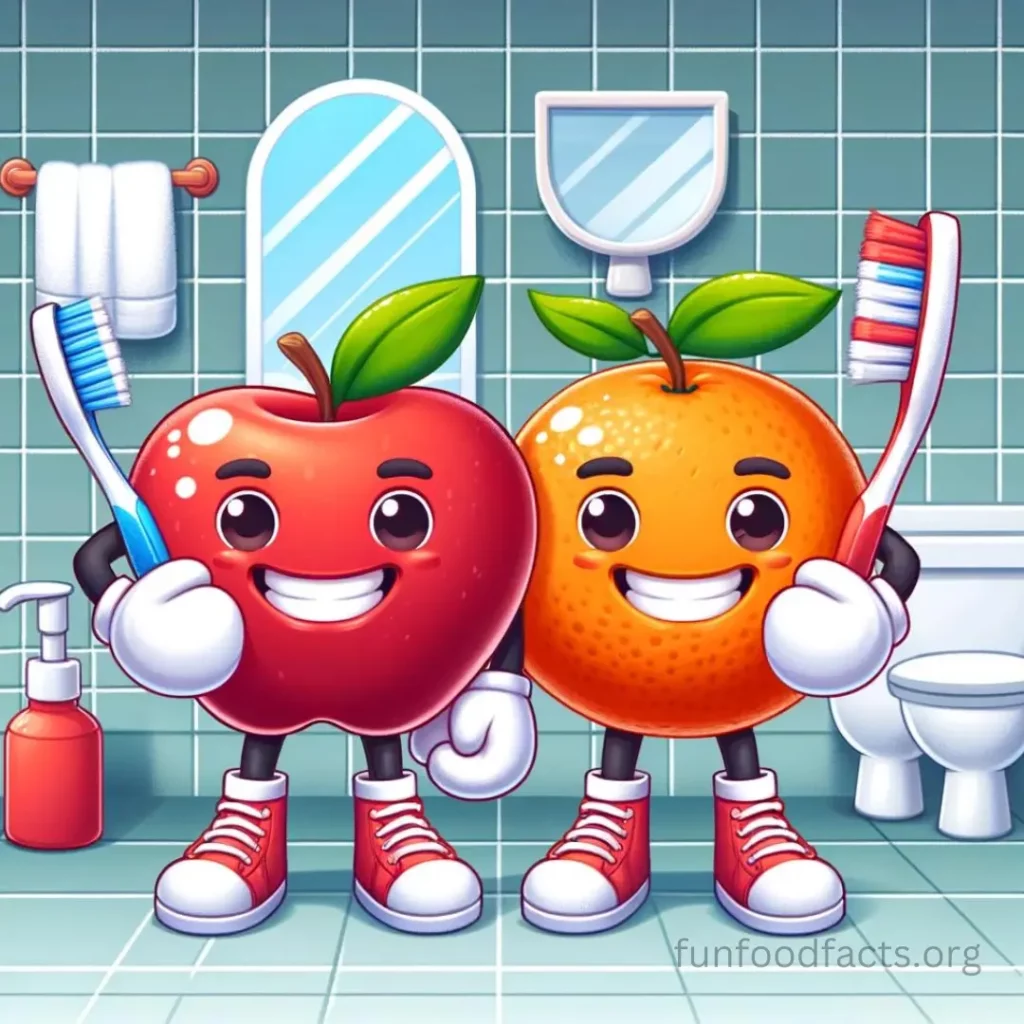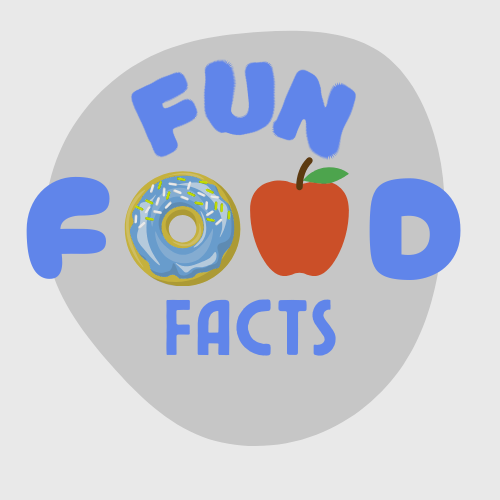
Apples and oranges: the classic comparison gets juicy! But forget just vitamins… Get ready for the weird, wacky, and wonderfully surprising facts that make these fruits legendary.
FAQs: Digging Deeper into Apples vs. Oranges
FAQs: Digging Deeper into Apples vs. Oranges
Q: Do the colors of apples and oranges impact their nutrients? A: Yes! Different pigments in apples and oranges indicate the presence of specific antioxidants and nutrients. For example, red apples contain anthocyanins, while orange carrots are packed with beta-carotene.
Q: Can eating too many apples or oranges be harmful? A: While both are healthy, eating excessive amounts can cause some issues:
- Apples: High fiber content might lead to digestive discomfort in some.
- Oranges: High acidity can irritate the stomach if you’re sensitive.
Q: Are apple seeds or orange seeds safe to eat? A: Apple seeds contain a tiny amount of a compound that converts to cyanide in the body. However, it’d take eating a LOT of seeds for this to be dangerous. Orange seeds are harmless, although not particularly tasty.
Q: Do apples and oranges impact blood sugar differently? A: Yes. Apples have a lower glycemic index compared to oranges, meaning they cause a slower rise in blood sugar levels. This makes apples a slightly better choice for people with diabetes.
Q: Are there culinary uses where apples specifically outperform oranges, and vice versa? A: Absolutely!
- Apples: Ideal for baking (pies, tarts), applesauce, and adding to savory dishes for a touch of sweetness.
- Oranges: Shine in juices, marmalades, zest for flavoring, and as a refreshing addition to salads.
3 Fun apple facts

Apples Float Because They’re Airy: Did you know that apples are around 25% air? This is why they bob so delightfully in water (and makes them perfect for Halloween games!).
One Ancient Apple Tree is Still Producing! There’s an apple tree in the U.S., planted in the 1640s, that still bears fruit. A true testament to apple tree longevity!
Fear of Apples? It’s a Thing: There’s actually a phobia called “malusdomesticaphobia” – the fear of apples.
What was the heaviest ever recorded, apple or orange?

The heaviest apple ever recorded takes the crown! Here’s the breakdown:
Heaviest Apple: A Japanese apple weighing a shocking 4.1 pounds (1.848 kg) was grown in 2005.
Heaviest Orange: While large oranges exist, they don’t seem to reach the record-breaking weights of apples. The heaviest oranges I could find reliable records for were closer to 2-3 pounds.
Ever wonder how many kinds of apples and oranges are out there?
Turns out, it’s not just the red and green ones at the grocery store!
Q: Okay, I’m curious. Just how many apple varieties exist?
A: Get this – there are over 7,500 different kinds of apples worldwide! That means you could eat a new type every day for over 20 years and still not try them all.
Q: Wow! What about oranges?
A: Oranges get a bit trickier. They love to change things up! There are tons of mutations and hybrids, so pinning down an exact number is tough. But, experts think there are likely thousands of orange varieties too!
Q: This is blowing my mind! Do they all taste different?
A: Absolutely! Some apples are super tart, while others are sweet like candy. You can find oranges that are bursting with tanginess, and others that are mild and perfect for snacking.
Q: Where can I find all these cool varieties?
A: Sadly, not at your average supermarket. Try farmer’s markets, orchards that specialize in heirloom apples, or online shops that sell unique fruits.
Apples or Oranges: Which Fruit is Better for Your Dental Health?

Apples win this category if dental health is your primary concern. Here’s why:
- Acidity: Apples are less acidic than oranges. High acidity can erode tooth enamel, making teeth more sensitive and prone to decay.
- Texture: The crunchy texture of apples helps scrape away plaque and food debris and stimulates saliva production, which helps neutralize acids in the mouth.
- Sugar: Although both fruits contain sugar, apples tend to have slightly less than oranges.
Important Note: Even though apples are a better choice for teeth, both fruits contain natural sugars that can contribute to tooth decay. Always brush your teeth after eating any kind of fruit, and drink plenty of water.
Should You Brush Your Teeth After Eating Acidic Fruit?
You shouldn’t brush your teeth for at least 1 hour after eating acidic fruits. Here’s a breakdown of why:
- Acid weakens enamel: Acidic foods and drinks temporarily soften tooth enamel, making it more vulnerable to damage.
- Brushing can be abrasive: Brushing too soon after consuming acidic foods can wear away the weakened enamel, leading to erosion and sensitivity.
- Waiting is key: Saliva naturally helps to remineralize and strengthen enamel. Waiting at least an hour gives your mouth time to do this before introducing the abrasive action of brushing.
Which Fruits Are Acidic and How Do They Affect My Teeth?
Highly Acidic Fruits (pH below 4):
- Citrus Fruits:
- Lemons (most acidic)
- Limes
- Grapefruit
- Oranges
- Kumquats
- Others:
- Blue Plums
- Pomegranates
- Grapes
Moderately Acidic Fruits (pH 4 – 4.6):
- Berries:
- Blueberries
- Cranberries (although cranberry juice is significantly more acidic)
- Others:
- Pineapples
- Peaches
- Apricots
- Tomatoes
Less Acidic (but still somewhat acidic) Fruits:
- Apples
- Pears
- Mangoes
Important Notes:
- pH Levels Can Vary: Even within the same fruit type, ripeness and specific varieties can lead to variations in acidity.
- It’s About Balance Acidic fruits still provide valuable nutrients! Enjoy them as part of a balanced diet and follow good dental hygiene practices.
We'd love to hear from you
We’re excited to hear your stories, preferences, and tips regarding apples and oranges.
Please leave a reply below!

Leave a Reply